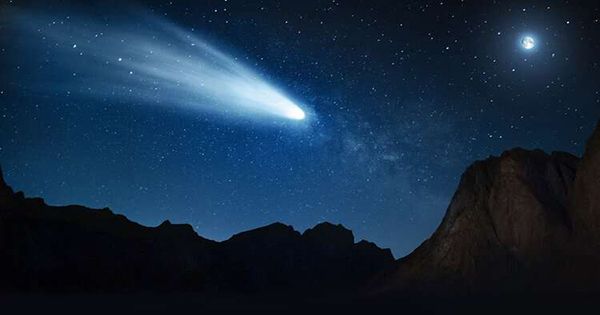Two astronomers discovered the largest comet ever seen in June of this year, an object so massive that it initially questioned whether it was a dwarf planet orbiting in a comet-like orbit. This “mega comet” is on its way inward from the farthest reaches of the Solar System. The results of three months spent learning more about this extraordinary object have now published by its discoverers and several co-authors. An article published in The Astrophysical Journal Letters (preprint on ArXiv.org) explains a lot about this world that we didn’t know before it was discovered.
However, do not worry if you are learning about C/2014 UN271 (Bernardinelli-Bernstein) for the first time. UN271 will be farther distant than Saturn even at its closest approach will in 2031, at roughly 11 astronomical units ((1 AU = distance from Earth to the Sun), frustrating scientists who would like a closer look at something so rare.
The orbit of UN271 has followed, and its most recent close encounter with the Sun occurred roughly 3.5 million years ago. It barely got to 18 astronomical units distant on that occasion, about twice the distance it will get this time and around the same distance as Uranus. It will soon be the closest it has ever been to the Sun, making it the cleanest comet we have ever seen, and a real throwback to the Solar System’s beginnings.
Early estimates of UN271’s size were invariably erroneous. The authors have finally resolved on measurement of 150 kilometers (100 miles) in diameter. Its volume is thousands of times that of a regular comet, and at least ten times that of a monster like Hale-Bopp. For perspective, comet 67P, which Rosetta investigated, is only 2.6 miles (4.3 kilometers) across, while Arrakoth, humanity’s farthest world, is 22 miles (35 kilometers) long and 12 miles (20 kilometers) wide.
When UN271 passed in front of a star as seen from Eastern Australia, there were hopes of getting a better idea of its size; however, cloud blanketed the entire region where the event could have been visible. Regardless of its size, the comet will not be visible to the human eye as it approaches Earth. One of the initial questions astronomers had about UN271 was if it had already begun to demonstrate cometary activity, or material turning to gas and forming a coma. TESS, NASA’s planet-hunter, and the Dark Energy Survey (DES) had imaged UN271 in 2018 without anyone detecting its significance, so the authors went back over the prior photos to see if they could spot any fuzziness.
They discovered a disparity in the readings, with TESS indicating a nearly two-fold brighter object. The explanation for this was because DES was only looking at a tiny area near UN271, whereas TESS was aggregating across a larger area, including a massive but faint coma, indicating material had been fleeing for quite some time. Although the makeup of the coma has yet to be determined, carbon dioxide carrying dust grains with it as it exists is regarded to be the most likely scenario.
UN271’s tail is far fainter, necessitating the need for many photographs to see it at all. “Speculating on the future behavior of comets is usually a losing venture,” the report admits, but UN271 expected to be about magnitude 9 at its brightest, visible to amateurs with tiny telescopes under dark skies. Some astronomers are eager to send a mission to UN271, estimating that the best time for a flyby is in 2033, which would need a launch in 2028.
















